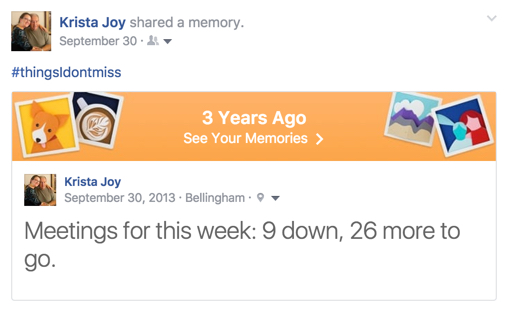-
The seven aspects of burnout

This is part of a series publishing portions of a research paper on How a Leader Maintains High Productivity Without Team Burnout. Appendix B: The seven aspects of burnout Since the 1980s there has been a massive explosion in social scientific research on the subject [of burnout]. Schaufeli and Enzman estimated that over 50 research dissertations […]
-
An Overview of Burnout

This is part of a series publishing portions of a research paper on How a Leader Maintains High Productivity Without Team Burnout. Appendix A: An overview of burnout from Preventive Stress Management in Organizations: Burnout, a concept dating to the late 1970s (Maslach, 1978), is a chronic pattern of negative affective responses that can result […]
-
How a Leader Maintains High Productivity Without Team Burnout

While completing my Bachelor’s of Science in Organizational Leadership I was required to produce a capstone research project. The subject I selected was How a Leader Maintains High Productivity Without Team Burnout. This material was relevant when I researched it in 2011; It is even more relevant now as I enter the nursing profession six years […]
-
Life after nursing school

The countdown to the end of nursing school is underway. My last exam is June 14th and pinning is June 16th. I can’t believe we’re here! It’s hard to believe that 3 years ago I was plotting away with absolutely no idea that I was going to embark on a new career path in healthcare. […]
-
Organization Posts
Organization tips and tricks Getting stuff done: how to organize tasks and stay focused Effective meetings & effective note-taking Don’t let papers over-run your life: file organization Organization apps; Feel more in control of your life
-
Project Management Posts
Overcoming roadblocks Two steps to making decisions on projects The one thing that never fails… emergencies Project Management and Rapid Redirection 4 skills to help young leaders succeed Organization & Project Managment Effective meetings & effective note-taking Getting stuff done: how to organize tasks and stay focused Excel for Project Managers Using Excel for Project […]
-
Nursing Pharmacology: Adrenergics & Cholinergics

I had a love/hate relationship with nursing pharmacology for my first year of nursing school. I loved the information but hated learning it. I didn’t figure out how to learn it effectively until we were 70% finished. Since then I keep thinking, “there has to be a better way to learn nursing pharmacology.” I recently […]
-
Unemployed in Washington? Here’s some useful resources.
Losing a job, or finding yourself unemployed can be a confusing, self-esteem-destroying experience. You may feel lost in a sea of uncertainty. You may be asking yourself “How will I pay my rent or mortgage?” “How will I afford groceries next week?” or “Where am I going to find a job?” You are not alone. There […]
-
Effective meetings & effective note-taking

This is the last post in my series on organization. Meetings may not be something that you immediately tie to being organized, but I’m including it because meetings can be either a huge time suck or a useful tool in creating organization among a group of people. And I can’t talk about meetings without talking […]
-
Don’t let papers over-run your life: file organization

Filing is the bane of my existence. I know some organization-lovers who enjoy the process of alphabetizing, but I’m not one of them. I wished I never had to file another piece of a paper, but the truth is I have important documents that I need to be able to find when I need them. […]